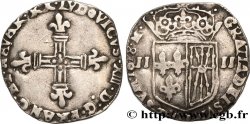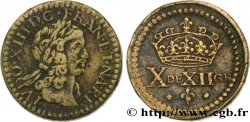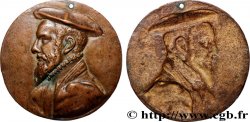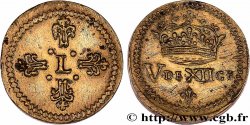Live auction - bry_931344 - LOUIS XIII Écu d'or au soleil, à la croix bâtonnée et fleuronnée 1638 Saint-Lô
You must signin and be an approved bidder to bid, LOGIN TO BID. Accounts are subject to approval and the approval process takes place within 48 hours. Do not wait until the day a sale closes to register. Clicking on "BID" constitutes acceptance of the terms of use of cgb.fr private live auctions.
Bids must be placed in whole Euro amounts only. The sale will start closing at the time stated on the item description; any bids received at the site after the closing time will not be executed. Transmission times may vary and bids could be rejected if you wait until the last second. For further information check the Live auction FAQ
All winning bids are subject to a 18% buyer’s fee.
All winning bids are subject to a 18% buyer’s fee.
| Estimate : | 1 600 € |
| Price : | no bid |
| Maximum bid : | no bid |
| End of the sale : | 24 September 2024 16:54:58 |
Type : Écu d'or au soleil, à la croix bâtonnée et fleuronnée
Date: 1638
Mint name / Town : Saint-Lô
Quantity minted : 4820
Metal : gold
Millesimal fineness : 958 ‰
Diameter : 22 mm
Orientation dies : 9 h.
Weight : 2,54 g.
Rarity : R3
Coments on the condition:
Cet écu d’or a été rogné si bien qu’il est d’un poids très léger avec une partie du haut des lettres des légendes hors flan
Catalogue references :
Predigree :
Monnaie provenant de la collection Jean-Pierre Garnier et qui avait été achetée auprès de Bruno Barret le 29 janvier 2003
Obverse
Obverse legend : .(SOLEIL). LVDOVIC. XIII. D: G. FRAN. ET. NAVA. REX, (LÉGENDE COMMENÇANT À 12 HEURES).
Obverse description : Écu de France couronné.
Obverse translation : (Louis XIII, par la grâce de Dieu, roi de France et de Navarre).
Reverse
Reverse legend : .CHRS. REGNAT. CHRS. IMPT CHRS. VINCIT. (TÊTE DE LION À DROITE). 1638, (LÉGENDE COMMENÇANT À 12 HEURES).
Reverse description : Croix pommetée avec lettre d'atelier en cœur.
Reverse translation : (Le Christ règne, vainc et commande).
Commentary
Écu d’or signalé d’après les archives dans l’ouvrage Monnaies royales françaises et de la Révolution (1610-1794), n° 32004, p. 50, mais qui n’était pas encore retrouvé. A noté que le point dans le O de LVDOVIC disparaît avec ce millésime.








 Report a mistake
Report a mistake Print the page
Print the page Share my selection
Share my selection Ask a question
Ask a question Consign / sell
Consign / sell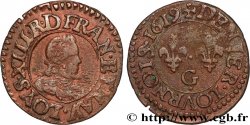
 Full data
Full data